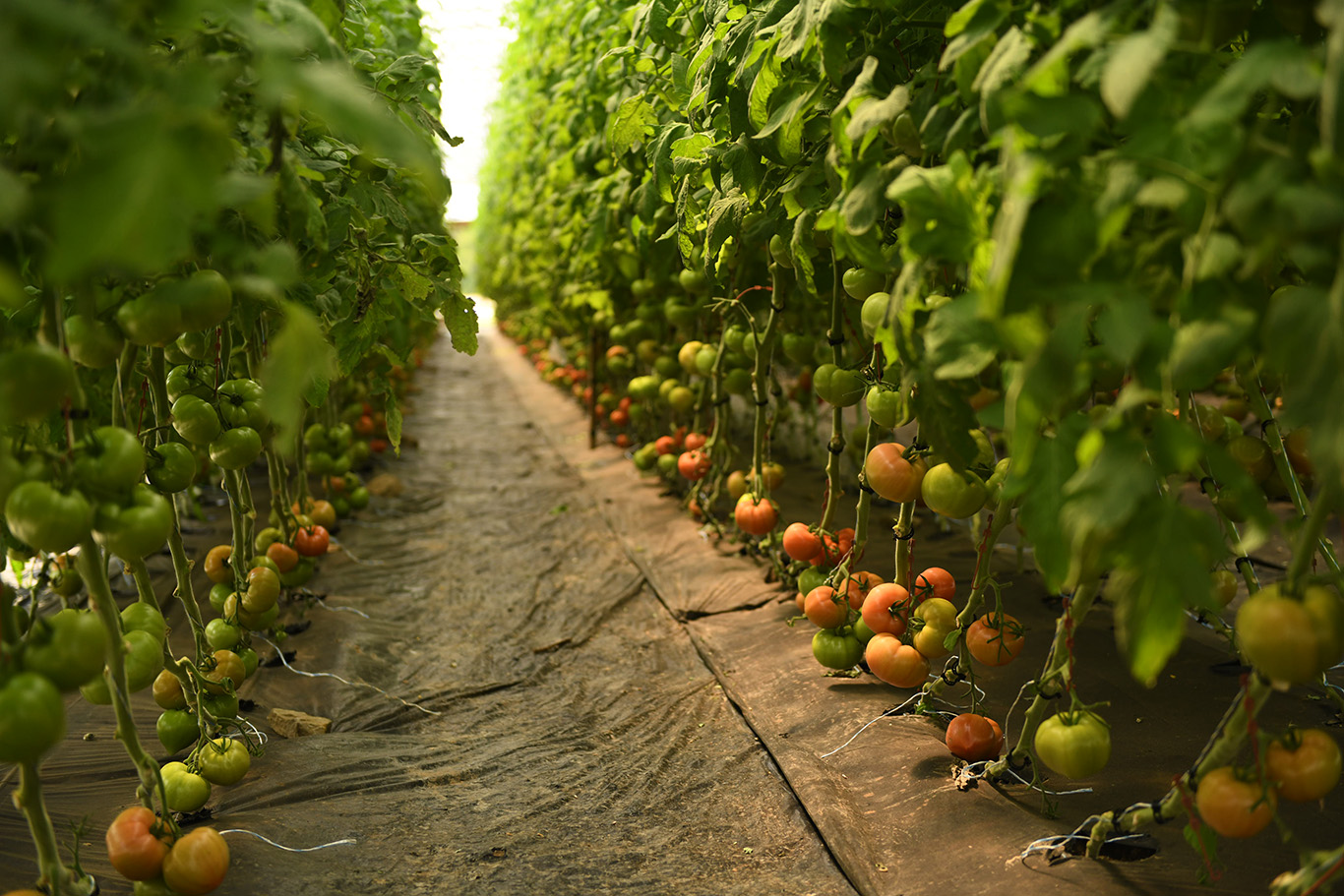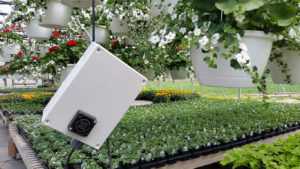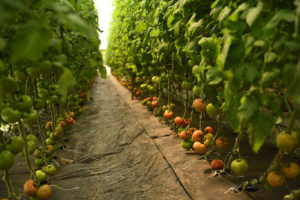Controlling Humidity in Tomato Production

By: Neil Moran
Controlling humidity in greenhouse tomato production can mean the difference between healthy, productive tomatoes and slow growing tomatoes marred with fungus problems, most notably, blossom end rot. To maintain acceptable humidity levels in a greenhouse it is important to control the climatic conditions in the greenhouse, especially extremes of hot and cold, humid and dry.
Understanding relative humidity
Relative humidity is the term used to express the ratio between the weight of moisture present in the air and the total moisture holding capacity of the air at a specific temperature and pressure.
It’s important to understand that as the temperature goes up in a greenhouse, so does the potential water-holding capacity of the air. For example, air at 70 degrees F will hold twice as much water as the same air at 50 degrees F. The condensation we see on plants and components in the greenhouse, like the covering and cross bars, occurs when the temperature on those surfaces drops below the dew point, which is the point where there is too much moisture in the air to remain in the vapor state. At this point the temperature in the greenhouse needs to be increased while venting the moist air.
Plants that have a  high water content will transpire more slowly than when the air is drier, or has a low relative humidity. Conversely, when relative humidity is low in a greenhouse, plants transpire to the point where they can become stressed.
high water content will transpire more slowly than when the air is drier, or has a low relative humidity. Conversely, when relative humidity is low in a greenhouse, plants transpire to the point where they can become stressed.
To grow healthy greenhouse tomatoes it is important to provide consistent climatic conditions. Sudden increases or decreases of relative humidity–as little as 20%–can cause tissue damage as the plant tries unsuccessfully to adjust to the sudden change. This can be the result of large volumes of cool or very warm air entering the greenhouse, sudden cloud cover, or a drop in temperature at nightfall.
Greenhouse tomato grower and retailer Ivan Stoltzfus, owner of Sunset Acres, near Leola, PA says 65-75% humidity is the acceptable range for a tomato crop. “They say at 90% your fungus spores will start growing,” says Stoltzfus. “If you can keep it at 65% you can keep your plants safe. If the humidity gets too low the plant will try to cool itself through evapotranspiration through the roots, which slows the growth of the plant.”
The biggest challenge in maintaining acceptable humidity levels, according to Stoltzfus, is sudden periods of cloudy weather, where you have to increase the heat in the greenhouse and exhaust the hot air to maintain the proper humidity. He says he meets this challenge by using automation via climate controls of his vents, louvers and curtains.
“Before I had automation I was spending a lot of time running into the greenhouse to check the temperature and check the humidity, crank the curtains up a little bit, or crank the heat up or whatever.” says Stoltzfus. “Now it is all preset, we still need to go in and check things to make sure things are working, but it works very simple on my part.”
Proper ventilation

Ventilation is a critical component in maintaining proper humidity levels. The best ventilation for a greenhouse comes from natural ventilation, according to Rich Hite, Technical Design Engineer with Advancing Alternatives. He says the best way to vent is through ridge vents.
“Typically people use the ridge vent as their humidity vent,” explains Hite, “Because air stacks at the top, by allowing the ridge vent to open it pulls all that hot air out thru natural convection, it does an air exchange.” He explains that natural ventilation works better than mechanical ventilation because with mechanical you’re drawing air in one end of the greenhouse and pushing it out the other, which can result in one end of the greenhouse being warmer (or cooler) and having more dense air than the other.
The climate control system sold by Advancing Alternatives uses aspirated humidity sensors which continually measures air from different parts of the greenhouse and will manage fans, vents, curtains, and louvers accordingly. This results in more even temperatures and humidity throughout the greenhouse.
“The system also has a temperature override,” explains Hite. “If the temperature inside drops below a certain level the grower has set the system will override humidity, so it doesn’t damage the crop; it’s better to have more humidity in the air than freeze the plants.”

Cultural practices to maintain proper humidity
Even the best climate controls and ventilation won’t replace good cultural practices in the greenhouse. Proper watering, adequate plant spacing and well-drained floors should be routine practices in any greenhouse. Overwatering and leaky hoses can result in puddles forming on the floor. This water in turn evaporates, adding moisture to the greenhouse environment. Water early in the day and just enough to prevent excess water on the floor. Well drained greenhouse floors also prevents weeds, which can contribute to high humidity via transpiration.
Through good cultural practices and climate control systems tomato farmers like Stoltzfus have eliminated the use of costly fungicides, which helps the bottom line and results in a healthy, vigorous, and tasty tomato for the consumer.